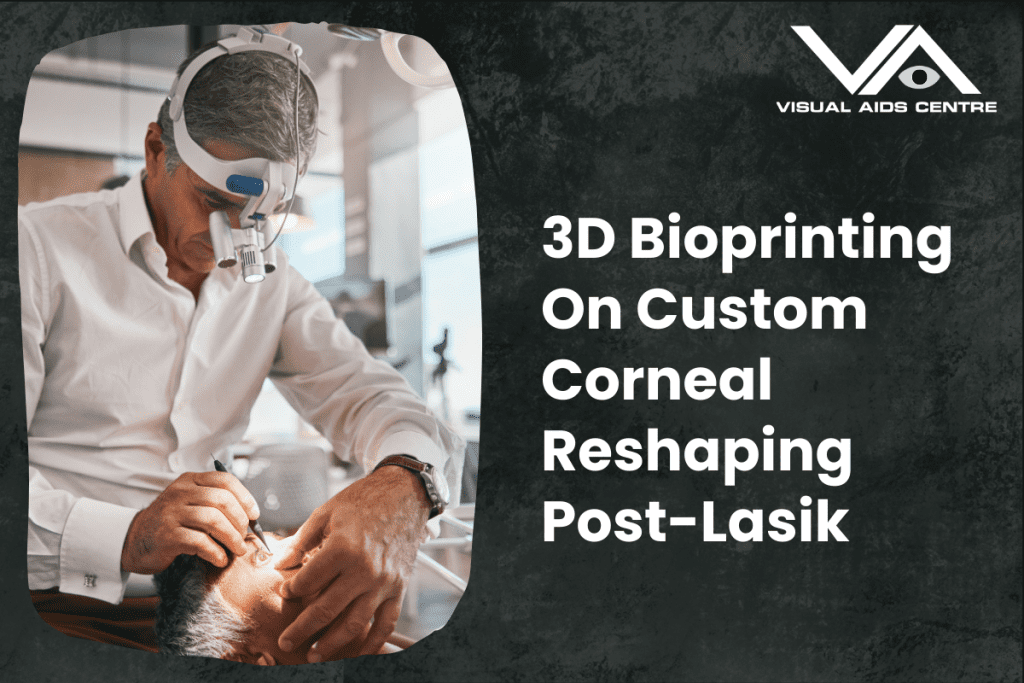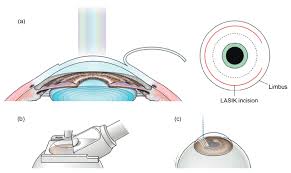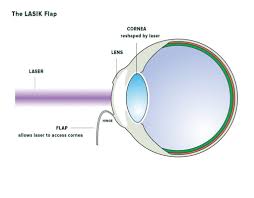Table of Contents
Toggle3D bioprinting is revolutionising the way we approach corneal reshaping after Lasik surgery.
This groundbreaking technology offers a tailored, precise solution for post-surgical corneal adjustments and healing, unleashing new possibilities in ophthalmology.
Advancements in bioprinting are opening doors to innovative treatments for vision correction and corneal reshaping. For professionals in ophthalmology, Lasik surgery is a familiar and highly effective procedure for vision enhancement. However, certain patients may experience complications or require further adjustments to their cornea post-surgery. Traditional methods have limitations, but now, 3D bioprinting has emerged as a highly customisable tool offering precision and regenerative potential in reshaping the cornea after Lasik.
This guide covers everything you’d like to know about integrating 3D bioprinting in custom corneal reshaping post-Lasik, from understanding the technology to its applications and practical implications.

The Role of 3D Bioprinting in Corneal Reshaping
What is 3D Bioprinting?
3D bioprinting is an advanced manufacturing technique that utilises bio-inks (a mixture of cells and hydrogels) to fabricate biological structures layer-by-layer. This method allows for the creation of complex, tissue-mimicking structures that are tailored to individual needs.
For ophthalmology, 3D bioprinting offers a breakthrough in corneal treatments due to its precision and customisation capabilities. By leveraging patient-specific data, such as corneal topography, bioprinting enables the production of corneal constructs that are fully customised to address unique surgical outcomes or complications.
Why is Post-Lasik Corneal Reshaping Crucial?
While Lasik surgery is highly successful, post-operative irregularities like epithelial ingrowth, dry eyes, or corneal ectasia may occur. These complications may result in distortions of the corneal surface that compromise visual quality.
Post-Lasik corneal reshaping addresses such issues by correcting irregularities, enhancing smoothness, and restoring the cornea’s natural form. While traditional methods like hard contact lenses, collagen cross-linking, or additional surgeries have shown efficacy, 3D bioprinting aims to provide a less invasive and more precise alternative that promotes healing by mimicking natural tissues.
Advantages of 3D Bioprinting for Lasik Patients
Precision Customisation for Every Patient
3D bioprinting uses patient-specific data collected through advanced imaging techniques like corneal topography scans. From these datasets, bespoke corneal constructs are printed to perfectly match the required structure and curvature. Unlike general treatments, this personalised approach enhances the success rate and improves visual outcomes.
This level of precision reduces the risk of over- or under-correction, ensuring optimal reshaping of the cornea for each Lasik patient.
Reducing Surgical Risks
Traditional post-surgical options, such as enhancements or flap re-lifts, can involve significant risks including inflammation, infection, or further structural weakening. However, 3D bioprinting-based solutions aim to achieve minimal invasiveness as they often involve applying bioprinted tissues onto the cornea.
This approach supports natural healing processes while mitigating potential complications associated with surgical intervention.
Promotion of Regenerative Healing
Bioprinted corneal tissues have the potential to restore and regenerate damaged cells, rather than simply acting as corrective agents. This is achieved by using bio-inks enriched with patient-specific cells, such as keratocytes or epithelial cells, which have the ability to integrate with the existing corneal structure.
By fostering natural tissue regeneration, this technology may improve long-term outcomes for patients with significant corneal reshaping needs post-Lasik.
Enhanced Accessibility and Speed
Emerging 3D bioprinting systems have now become more accessible, thereby reducing production costs and timeline complexities. With developments in bioprinting precision, it is possible to prepare corneal constructs in shorter timeframes while maintaining exact patient specifications.
This shorter preparation and recovery timeline benefits both medical practitioners and patients looking to resolve post-Lasik complications more quickly.
The Process of 3D Bioprinting for Corneal Reshaping
1. Capturing the Patient-Specific Corneal Map
The process begins with high-definition imaging, capturing the topography and curvature of the cornea in detail. The information includes pre- and post-Lasik structural data to identify irregularities that need correction.
Advanced imaging technology is critical here, ensuring that every millimetre and curvature mismatch is considered in the bioprinting design.
2. Design and Planning
Using imaging data, ophthalmologists and bioengineers collaborate to digitally model the exact corneal reshaping requirements. With advanced software, they simulate reshaping outcomes to ensure precision and desired results before proceeding to fabrication.
3. Printing Corneal Constructs
At this stage, 3D bioprinters use bio-inks loaded with cornea-replicating cells to construct the reshaping material layer by layer. Special care is taken to match the mechanical and optical properties of the patient’s cornea during printing.
4. Application and Integration
Printed corneal constructs are carefully applied to the affected area of the cornea. Depending on the patient’s condition, they might be combined with regenerative therapies or biologic sutures to assist in integration and healing.
Challenges and Future Directions
Current Limitations
Despite these promising advancements, there are factors that limit the widespread adoption of 3D bioprinting in post-Lasik scenarios. Challenges include:
- Difficulty in creating bio-inks suitable for long-term use in the cornea.
- Ensuring long-term structural stability and transparency in bioprinted constructs.
- The steep learning curve for professionals new to the technology.
Innovations on the Horizon
The future of 3D bioprinting in ophthalmology is exciting. Researchers are currently exploring the integration of stem cells and growth factors into bio-inks, promising even better regenerative outcomes. Advances in material engineering are also ensuring more accurate optical and mechanical properties in bioprinted constructs.
With these developments, we’re moving closer to making bioprinting an indispensable tool in ophthalmology.
How Ophthalmologists and Researchers Can Benefit?
Transform Your Practice
By incorporating 3D bioprinting into your practice, you can offer more precise, minimally invasive solutions for patients with post-Lasik irregularities. It’s an opportunity to establish your practice as a pioneer in cutting-edge ophthalmic care.
Engage in Collaborative Research
Collaboration between researchers, bioprinting technology leaders, and medical professionals is essential. Participating in clinical trials and research initiatives allows you to remain at the forefront of this rapidly evolving field.
Enhance Patient Outcomes
Patients are increasingly seeking personalised, effective, and less invasive treatments. Integrating bioprinting ensures your practice meets these expectations while improving visual health outcomes.
Revolutionising Post-Lasik Care with 3D Bioprinting
3D bioprinting is not just a technological advancement; it is a new frontier in tailored, regenerative ophthalmic care. For Lasik patients who require custom corneal reshaping solutions, this approach delivers precision, safety, and unmatched potential for natural regeneration. While challenges still exist, its growing accessibility and constant innovations hold immense promise for ophthalmologists and researchers alike.
If you’re exploring post-Lasik treatments for your patients or are curious about how this technology can integrate into your practice, 3D bioprinting provides an unparalleled opportunity to redefine corneal care.













